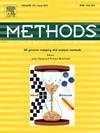用大语言模型转化乳腺癌的诊断和治疗:一项综合调查
IF 4.3
3区 生物学
Q1 BIOCHEMICAL RESEARCH METHODS
引用次数: 0
摘要
乳腺癌(BrCa)是女性最常见的癌症之一,由于其复杂的生物学机制,在治疗和诊断领域面临许多挑战。早期和准确的诊断对提高生存率起着至关重要的作用,但现有的成像方法和临床数据解释的局限性往往阻碍了最佳结果。基于变压器等先进架构开发的大型语言模型(llm)在数据处理和医疗决策方面带来了重大变革。通过分析大量的医学和临床数据,这些模型可以通过识别图像和医疗记录中的模式来实现早期诊断,并通过整合遗传标记和临床指南来提供个性化的治疗策略。尽管这些模型具有变革潜力,但它们在BrCa管理中的使用面临着诸如数据敏感性、算法透明度、伦理考虑以及模型与医疗应用细节的兼容性等挑战,这些问题需要解决才能获得可靠的结果。本文系统回顾了LLMs对BrCa治疗和诊断的影响。本研究的目的包括分析LLM技术在诊断和治疗这种疾病中的作用。研究结果表明,llm的应用在BrCa管理的各个方面都有了显著的改善,例如BrCa诊断和治疗效率(EDBC)提高了35%,系统的临床信任和可靠性(SCTR)提高了30%,患者教育和信息质量(IPEI)提高了20%。最终,本研究证明了llm在推进BrCa精准医疗方面的重要性,并为有效的以患者为中心的护理解决方案铺平了道路。本文章由计算机程序翻译,如有差异,请以英文原文为准。
Transforming breast cancer diagnosis and treatment with large language Models: A comprehensive survey
Breast cancer (BrCa), being one of the most prevalent forms of cancer in women, poses many challenges in the field of treatment and diagnosis due to its complex biological mechanisms. Early and accurate diagnosis plays a fundamental role in improving survival rates, but the limitations of existing imaging methods and clinical data interpretation often prevent optimal results. Large Language Models (LLMs), which are developed based on advanced architectures such as transformers, have brought about a significant revolution in data processing and medical decision-making. By analyzing a large volume of medical and clinical data, these models enable early diagnosis by identifying patterns in images and medical records and provide personalized treatment strategies by integrating genetic markers and clinical guidelines. Despite the transformative potential of these models, their use in BrCa management faces challenges such as data sensitivity, algorithm transparency, ethical considerations, and model compatibility with the details of medical applications that need to be addressed to achieve reliable results. This review systematically reviews the impact of LLMs on BrCa treatment and diagnosis. This study’s objectives include analyzing the role of LLM technology in diagnosing and treating this disease. The findings indicate that the application of LLMs has resulted in significant improvements in various aspects of BrCa management, such as a 35% increase in the Efficiency of Diagnosis and BrCa Treatment (EDBC), a 30% enhancement in the System’s Clinical Trust and Reliability (SCTR), and a 20% improvement in the quality of patient education and information (IPEI). Ultimately, this study demonstrates the importance of LLMs in advancing precision medicine for BrCa and paves the way for effective patient-centered care solutions.
求助全文
通过发布文献求助,成功后即可免费获取论文全文。
去求助
来源期刊

Methods
生物-生化研究方法
CiteScore
9.80
自引率
2.10%
发文量
222
审稿时长
11.3 weeks
期刊介绍:
Methods focuses on rapidly developing techniques in the experimental biological and medical sciences.
Each topical issue, organized by a guest editor who is an expert in the area covered, consists solely of invited quality articles by specialist authors, many of them reviews. Issues are devoted to specific technical approaches with emphasis on clear detailed descriptions of protocols that allow them to be reproduced easily. The background information provided enables researchers to understand the principles underlying the methods; other helpful sections include comparisons of alternative methods giving the advantages and disadvantages of particular methods, guidance on avoiding potential pitfalls, and suggestions for troubleshooting.
 求助内容:
求助内容: 应助结果提醒方式:
应助结果提醒方式:


